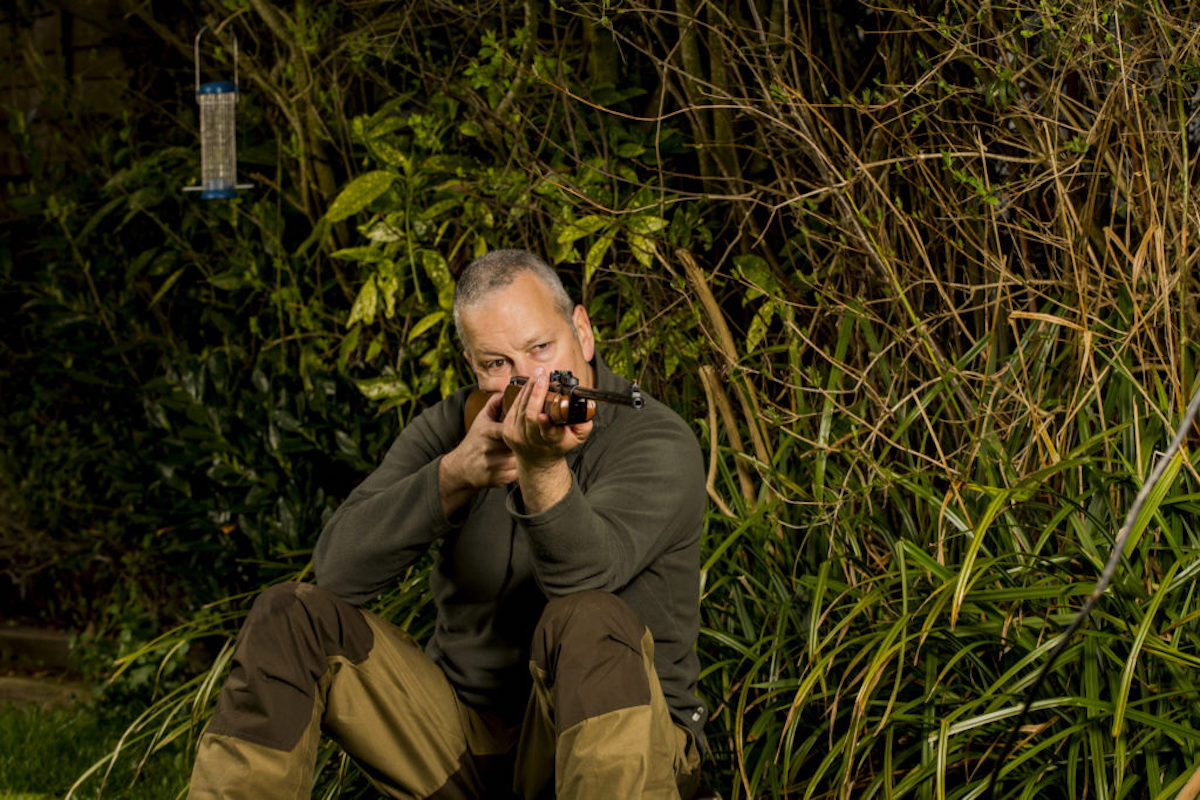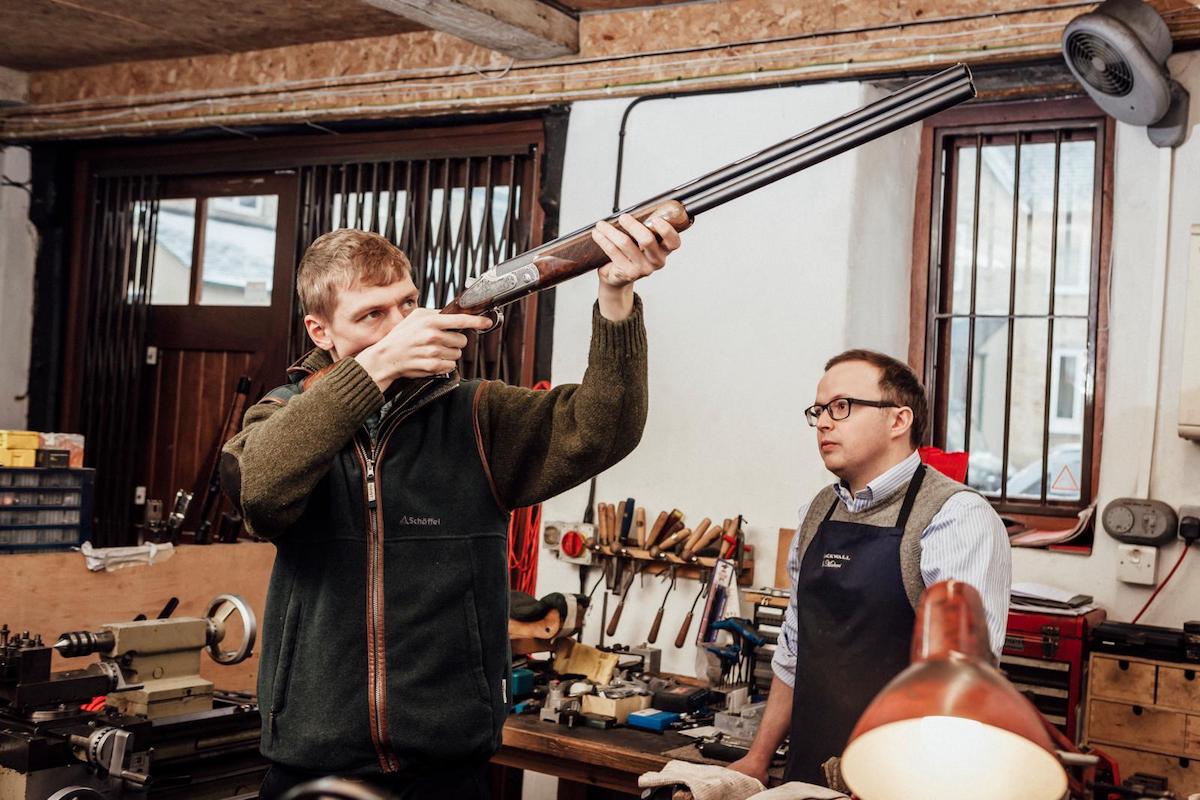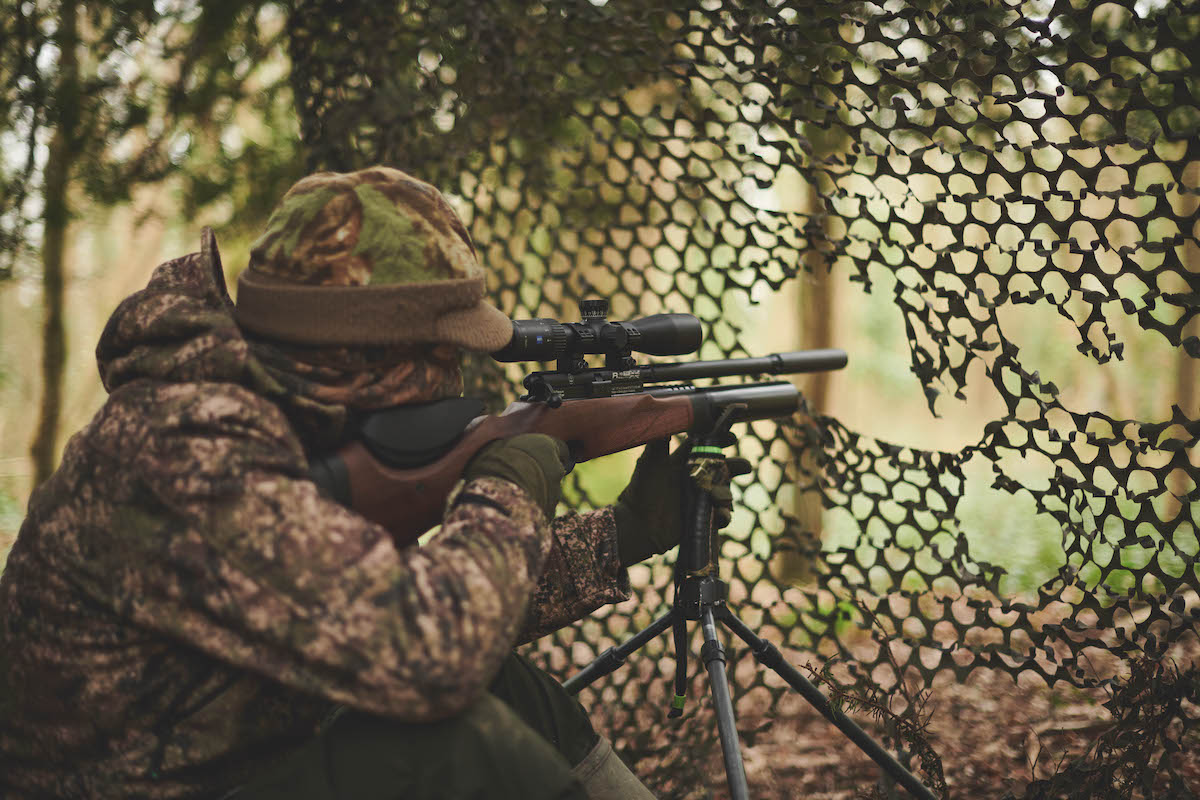Winchester Model 55RS and Model 55
Mike Morton tests the Winchester Model 55RS and Model 55

Winchester made a name for itself back in the 1860s with its successful repeating lever-action rifles, and went on to create the equally iconic Model 70 bolt-action sporting rifle in 1936. It’s a testament to their rock-solid design and popularity that both types of rifle are still in production today.
Model 55RS and Model 55
But the Winchester name has also managed to cross the divide from centrefires to airguns, and I’ve been shooting the Model 55RS and 55 – two springers that are very much inspired by the Model 70.
The Model 55RS, which costs £269, is a scope-only rifle, but comes with a moderator and a riser rail, while the Model 55 has a recommended retail price of £229 and is fitted with fibre-optic open sights. Like the RS, the 55 can be fitted with a scope, but doesn’t have a moddy or riser.
While the two rifles have a number of differences, they are essentially the same gun, so I’ll focus on the 55RS, pointing out any obvious discrepancies between the two models along the way.


Simple hardwork stocks
Both rifles wear fairly simple hardwood stocks, which are subtly different from each other. This is mainly in terms of the shape of the chequering, and the length and shape of the forend, which is slightly longer and more angular on the Model 55RS.

The Model 55 is also capable of taking a moderator, but it needs to be thin, otherwise it may interfere with your sight picture
There’s not much to choose between them, but the chequering on the 55 is a little more aggressive, although the amount of grip offered by both types of chequering is plenty.
Both stocks have identical ribbed rubber butt pads that grip the shoulder pocket well and help absorb recoil. The comb is high enough to get a pleasing head position with a scope on the RS, while low enough to allow a similarly good sight picture with the fibre-optic open sights of the Model 55.
Metalwork
The workmanlike action and barrel have been blued to a semi-gloss sheen, but this wasn’t immediately apparent with the .177 review guns, as both rifles were covered in a protective film.
This waxy brown substance is a bit like the old gun preservative Cosmoline, but was easy enough to remove with a microfibre cloth. The barrel needed a good clean as well, as the bore had also been coated to protect the steel during shipping and storage.

Cocking the shorter-barreled Model 55RS is surprisingly easy – the moderator acts as a handy cocking aid
It really is necessary to remove this stuff before you start shooting, otherwise accuracy will suffer, but you won’t know why. One test I like to carry out with springers is to give them a vigorous shake and see if anything rattles.
It’s not the type of test that would probably be approved of by lab technicians, but it does seem to work. Both guns passed the shake test quite nicely.
The barrel of the RS is fairly short at 32.5cm, but is fitted with a moderator, while the 55’s is a longer 47cm, as the extra length is needed to mount the front sight. Both rifles have metal trigger guards and trigger blades, which you don’t always find on rifles at these prices.
Features and function
While the barrels may be different lengths, the actions appear to be identical, with a rocker safety catch on the right-hand side, and both receivers being machined with dovetail grooves and a cutout for an arrestor pin.
Out of the box, the RS comes fitted with a riser rail. This attaches to the rifle via the dovetail groves and is locked in place with its own arrestor pin. The riser rail itself features a repeat set of dovetail grooves and its own slot to engage with the arrestor pin in your chosen scope mounts.
I initially fitted my scope using the riser, but I found it was too high, so just removed it and fitted the scope mounts directly to the action for perfect head alignment.

The safety catch adopts the near-universal standard of forward for Fire and back for Safe – it can be applied at any time
The riser rail could be very useful depending on your own physical build and scope choice, however. The instruction manual suggests fitting a one-piece mount, but I fitted two-piece mounts and had no problems with scope creep thanks to the use of the arrestor pin.
Centre of balance is near–perfect on the RS, being just in front of the trigger guard with the scope fitted. The 55 was almost as good, with the gun being very slightly nose-heavy due to the extra barrel length.
While the 55 can also be fitted with a scope, it’s ready to go out of the box with fibre-optic sights. The front sight is fixed, and is composed of a red element, while the rear sight is green.
Windage and elevation adjustments are both carried out via the rear unit, using tool-free dials that are labelled L and R for windage, and are numbered for elevation. It wasn’t immediately obvious to me, but rotating the elevation dial clockwise raises the point of impact.
I’m 6 ft tall and had no problem shouldering both rifles, but wondered how someone with a smaller build would fare, and so enlisted the help of my teenage son, who reported no problems getting a good sight picture with either rifle.

Forend chequering on the Model 55 matches the angular style – making a ‘W’ shape – of the classic Winchester Model 70 centrefire
The Model 55RS comes with a sleek moderator that’s already fitted to the rifle. It uses a perforated plastic baffle to cut down noise, and while the reduction in decibels isn’t stellar – springers are notoriously difficult to moderate – what noise reduction it did do was welcome.
The Model 55, on the other hand, doesn’t come with a moderator, but the barrel is threaded to take one. I borrowed the moddy from the RS for testing, and because it’s so slim I was still able to get a good sight picture. If you fit an aftermarket moderator to your 55, make sure it doesn’t block your view of the target if you’re shooting with open sights. This becomes a non-issue if you’re shooting with a scope.
Both rifles are fairly easy to cock, and the moderator pulls double duty as a cocking handle on the shorter-barrelled RS. Winchester uses something called the ABT safety cocking system, but it’s a bit different to a conventional anti-beartrap device, as there’s no lever or catch to depress in order to close the barrel.
With the rifle cocked and the barrel still broken, the rifle will not go off – even with the safety set to ‘F’ for fire – if the trigger is accidentally pulled. The gun will only fire when the barrel has been properly closed.

The rear sight on the Model 55 is adjustable for windage and elevation using dials that click positively
I put this to the test – and please note I did this under very carefully controlled conditions – and it works superbly. Gun safety always has to come from good gun handling rather than any mechanical safety device, but it’s still good to know it’s there as a back-up. (Read more on the shooting safety rules here.)
The safety catch works by blocking the trigger, and can be applied or disengaged whether or not the rifle has been cocked. If you take a shot, leave the safety off, then recock and seat a pellet, remember the gun will become live as soon as you close the barrel. Alternatively, get into the habit of taking a shot and then immediately applying the safety before recocking.
The trigger on the RS had a modest amount of first-stage travel before coming to a definite stop, with quite a bit of creep on the second stage. With plenty of use, the trigger did settle down, and is now far more predictable, although some creep is still present. The trigger on the Model 55 was similar in operation.
Performance and precision
Shooting these rifles was fun, as they proved to be docile and undemanding. My ‘go to‘ pellet for a .177 springer is JSB Exact Express, but the RS preferred regular Exacts. Because of their similarity, chrono testing was only carried out on the RS. (Read our guide to the best air rifle pellets.)
Using the aforementioned Exacts, I shot a 10-shot string averaging 760 feet per second, producing a muzzle velocity of 11.03 foot pounds. So far so good. The velocity spread had a disappointing variation of 19 feet per second, but that was down to a low reading caused by one rogue pellet.

A red fibre-optic foresight complements the green of the rear sight – this isn’t adjustable as all corrections are made at the rear
With this pellet taken out of the mix, the spread was reduced to 8.2 feet per second – a great result for a springer of this price.
Having found it to be consistent, it was time to see how well it shot. The Model 55RS is a full-size, full-power rifle, but weighing 2.4kg, it’s surprisingly light. With any recoiling rifle, weight is usually the shooter’s friend, as it not only helps keep the rifle stable when in the aim, but helps to minimise felt recoil.
For these reasons, the RS should have been hard to shoot – but it wasn’t. Instead, this rifle turned out to be very well behaved, and didn’t seem to be too hold-sensitive regarding the placement of the leading hand.
At 25 yards, the RS was punching single-hole groups with ease.
Back at 30 yards, the news was almost as good, with sub-10 pence piece-sized groups being the order of the day.
As a break from shooting paper targets, I like to shoot spinners instead – especially with a springer – and have a twin rabbit and pigeon’s head spinner. (Read our list of the best air rifle targets for setting up a range at home.)

The RS comes with a riser rail already fitted – this would be useful for scopes with a larger objective lens

Mike got a perfect sight picture with his smaller 4-12x optic by attaching the scope mounts directly to the dovetail grooves
Using these, I could hit both animal heads 100% of the time. I also shot the much smaller counterweight to the pigeon’s head, managing to hit this an average of eight times out of 10 at 30 yards.
The Model 55, meanwhile, was shot purely with the fibre-optic sights, and it was a fun rifle to shoot. Any rifle making use of open sights rather than a scope will be limited by what can actually be seen of the target. With this in mind, I managed to shoot 1” groups at 15 yards, beyond which too much of my target – a 1” Target Spot – was covered by the sights.
But open sights do come into their own when tearing apart tin cans and larger spinners on the plinking range.
The market for rifles around the £225–£275 mark is expanding, which is great news for airgun shooters, as it offers more choice, and if you’re after a springer of this type, the Model 55RS and Model 55 are definite contenders for your shortlist.
Which one to get? Well, it all depends on how much you want the ability to shoot with open sights. If you’re torn between opens and optics, the 55 can do both, but if you know you’re going to want to shoot scope-only, then I’d suggest heading straight to the RS, which is faster-handling thanks to its shorter barrel, and comes with that riser rail and moderator.









